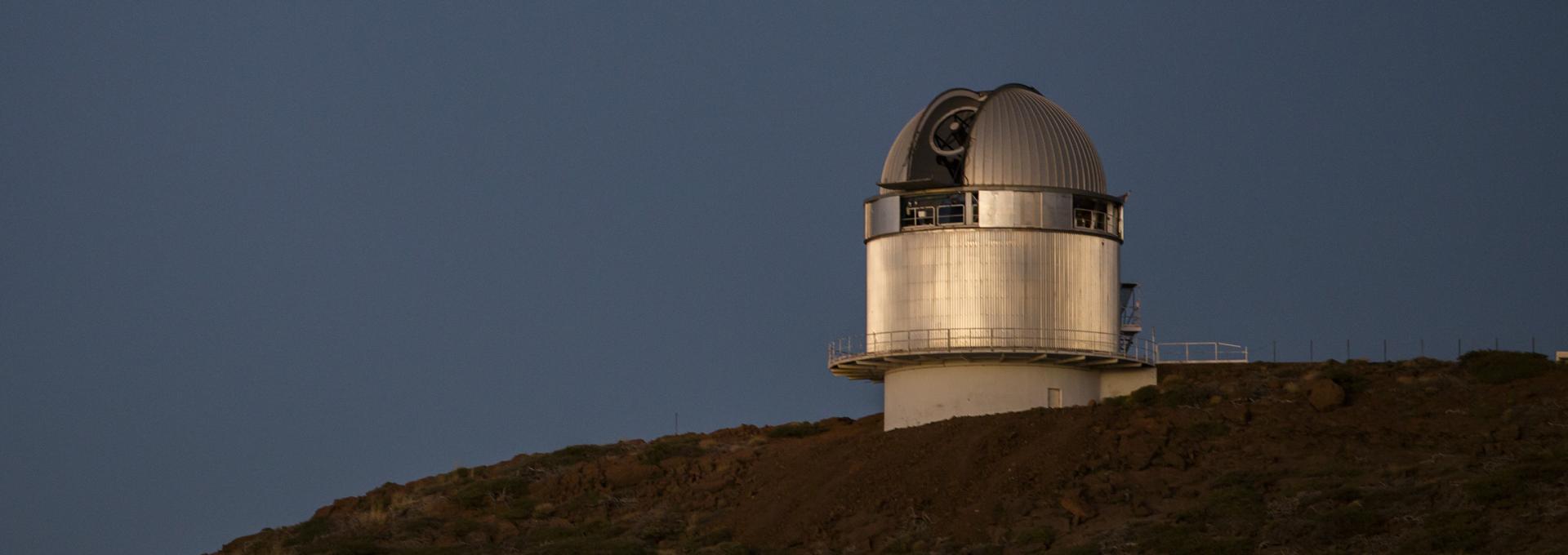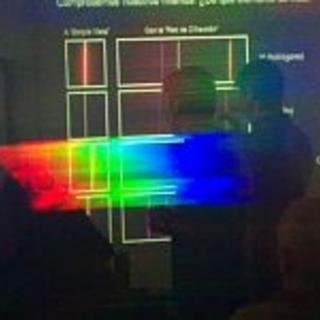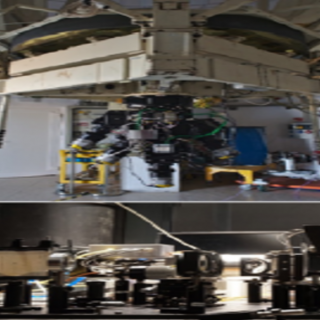Nordic Optical Telescope


The Nordic Optical Telescope (NOT) is a modern 2.6-m optical/IR telescope, located at the highest site of the Roque de los Muchachos Observatory. Inaugurated in 1989, NOT is operated by a consortium of Research Councils from Denmark, Finland, Norway, and Sweden, and the University of Iceland.
NOT serves the astronomical communities of these countries and Spain, but all astronomers may apply for time at NOT. All proposals are peer reviewed by an independent committee, and competition for time is keen.
NOT also participates in the OPTICON Trans-National Access programme for all European astronomers, funded by the EU Commission under Framework Programme 6.
The primary mirror of NOT is 2.6 m in diameter. The telescope moves on vertical and horizontal axes, under full computer control. The light-weight, building rotates together with the telescope itself. NOT is designed for high-quality optical and near-infrared imaging, so the optical surfaces are of very high quality and can be tuned to optimum performance. The building is designed to avoid all disturbing heat sources, and the dome is cooled during daytime. Through wide shutters, the dome is flushed with ambient air at the beginning of the night - a feature adopted by all later telescopes.
Because of these features and its ideal location at the site, NOT consistently delivers the best images of any night-time telescope at ORM. As far as possible, observations are scheduled to take advantage of the best observing conditions.
NOT is equipped with a set of instruments designed to optimise its performance on projects where it can be fully competitive. The workhorse optical camera/ spectrograph combination ALFOSC offers a wide and flexible set of observing modes; direct imaging and single- as well as multi-object spectroscopy are available simultaneously. A unique, multi-window high-speed readout mode allows to monitor rapid brightness variations in a target star, as referred to several comparison stars measured simultaneously.
NOTCam is a near-IR counterpart to ALFOSC, and both are in much demand for programmes ranging from cosmology to the Solar system. Two high-resolution échelle spectrographs, SOFIN and FIES, supplement them for detailed work on bright objects; FIES is fed by an optical fibre, making it permanently available for a wide range of projects requiring flexible scheduling.
"A project to build a Nordic Telescope was first proposed in 1980 by Profs. Bengt Strömgren and Anders Reiz, who obtained funding for a feasibility study for a 2.5m telescope from the Carlsberg foundation. A feasibility study by Torben Andersen was completed in July 1981 and discussed at the Nordic Astronomy Meetings in November 1981 and February 1982. A Nordic Optical Telescope Committee was formed in September 1982 and a revised project study was presented at the end of 1982. Funding for initial project activities, notably site testing and progress on detailed design, was provided in early 1983 by the Swedish and Danish Natural Science Research Councils.
The project became reality in December 1983, when the Nordic Council of Ministers allocated 8 MSEK to the construction, upon which the four Nordic research councils (Denmark, Finland, Norway, and Sweden) approved the remaining 21 MSEK. Thus, the Nordic Optical Telescope Scientific Association (NOTSA) was founded in January 1984, and the first Council and Director (Arne Ardeberg, Lund) were appointed (Iceland joined NOTSA later, in 1997).
Substantial work started in July 1984, when a technical project group was formed, and the main design features of the NOT were approved in early 1985. At the same time, it was decided to locate the telescope at the new observatory site on La Palma. After a number of technical and financial difficulties had been overcome, the NOT was inaugurated in 1989, and regular observations started in 1990. The initial years of operation proved the excellent basic qualities of the telescope and the site but, as pointed out by an international review panel in 1994, deficiencies in the instrumentation and insufficient staff for the operations on La Palma still prevented the telescope from reaching its full potential.
Under Vilppu Piirola (Turku), who took over as Director in 1995, the budget and operations of NOTSA were thoroughly reorganised with a focus on the scientific output. An adequate scientific and technical staff on La Palma was recruited, headed by an experienced Astronomer-in-Charge, Hugo Schwarz, and an ambitious, systematic programme brought the NOT operations up to international standards. At the same time, the Associates funded a joint programme to equip the telescope with a versatile set of state-of-the-art optical and near-infrared workhorse instruments. As a result, the scientific interest in and reputation of the NOT increased steadily, as reflected in the annual lists of publications based on NOT data. A far-sighted step in this period was to join the EU-funded Infrastructure Coordination Network OPTICON, which involved the NOT - and Nordic astronomy in general - in the initiatives to promote greater synergy and coordination in European ground-based astronomy.
The NOT was thus already a well-established, successful operation in 2002, when Johannes Andersen and Thomas Augusteijn became Director and Astronomer-in-Charge (later Deputy Director). Gradual instrumentation upgrades continued (new detectors; a stable location for the high-resolution spectrograph FIES), and financial reserves also made it possible to overhaul and completely renew the telescope control and cooling systems, securing continued operation for another couple of decades. In parallel, a sustained programme was pursued to document and streamline telescope, instrument and data flow operations so as to improve the efficiency, flexibility and reliability of the operations and the short- and long-term scientific value of the data. Notable scientific results include long-term monitoring of active stars and rapid response to events in the emerging fields of Gamma-Ray Bursts and exoplanets (for more detail, see the Annual Reports and lists of publications). A programme of training activities, including an expanded Research Student programme, was also developed. At the end of September 2013 Johannes Andersen retired, and Thomas Augusteijn was appointed Director as of October 1st, 2013."
"The original concept for the NOT was an independent, general facility for observational projects by Nordic astronomers. The scientific and organisational context in which it operates today is vastly different from that of 1990: Finland has joined ESO (along with UK, Spain and several other countries), and a new generation of European (even global) mega-facilities at optical, infrared and radio wavelengths dominates the scene. Smaller telescopes, such as the NOT, must specialise and coordinate their operations at the European level in order to be scientifically and financially competitive.
This philosophy underlies the ASTRONET consortium, which was formed in 2005 by all the largest funding agencies for European astronomy, with EU support. Its goal is to prepare a science-based plan for the coordinated development of all of European astronomy - at all wavelengths, from the ground and in space, and including the crucial human resources. In extension of its membership in OPTICON, NOTSA has played a very active role in ASTRONET and contributed significantly to the development of a new operational paradigm for the European 2-4m telescopes.
Thus, we see the future of the NOT as a specialised tool in the panoply of facilities available to European astronomy, focused on scientific fields where it can optimally serve the best Nordic and European science teams, and in concert with telescopes offering complementary capabilities. To this end, we plan to equip it with a single new, permanent focal-plane instrument, offering optical and NIR imaging and spectroscopy and modelled on the highly successful X-shooter at the ESO Very Large Telescope (VLT). With FIES upgraded to yield high-precision spectropolarimetry and also permanently available, this will make the NOT a powerful tool for studying a wide range of transient and variable astrophysical sources in the coming decade."

